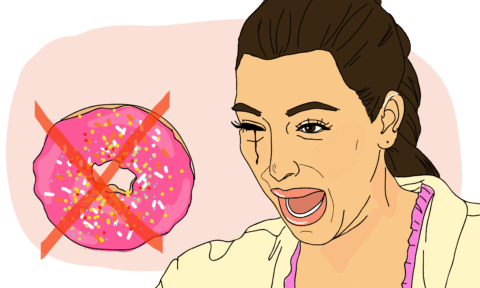In the Feb. 2 edition of the Sheaf, I outlined how easy it can be to over-consume sugar and the dangers of doing so. While that’s all fine and dandy, how exactly do you prevent yourself from eating too much sugar?
Well, you just eat less sugar of course, but this is much easier said than done. Sugar has become incredibly prevalent in today’s foods and it can be hard to find low sugar alternatives to the foods you love. Accepting that you simply won’t be able to eat like you used to is a good first step to lowering your sugar consumption, as eating less sugar is not an easy task.
Learning all of the different names for sugar and other sweeteners is a good place to start. When searching the ingredient list on a product, look for words that  indicate sugar content, such as sugar, brown sugar, cane and beet sugar, high fructose corn syrup, dextrose, fructose, glucose, maltose, sucrose, fruit juice concentrates, honey, molasses, maltodextrin, agave syrup, malt syrup, maple syrup and syrup.
indicate sugar content, such as sugar, brown sugar, cane and beet sugar, high fructose corn syrup, dextrose, fructose, glucose, maltose, sucrose, fruit juice concentrates, honey, molasses, maltodextrin, agave syrup, malt syrup, maple syrup and syrup.
This list is daunting and for many it can be hard to remember all of these, but remembering these names is a surefire way to ensure whether or not the food you’re looking at contains added sugar. In addition to this, also check how much sugar is in the product by looking at the nutritional label.
So you know how to check for sugar. Now what? Shifting from a diet consisting of high sugar foods to one with reduced sugar content is not as simple as just knowing how much sugar is in the foods you’re eating. We like sugary foods, and cutting back on them is not easy. Luckily there are tips to help you cut back on added sugar, even if only in a small amount.
It can be helpful to start small and allow yourself to feel accomplished about minor changes that make bigger changes seem a bit easier. For instance, if you drink coffee regularly, try it without putting any sugar in or work your way up to unsweetened coffee by slowly lowering the amount of sugar you add.
Another small change that can be made is to mix unsweetened plain yogurt in with your favourite brand. Then you can enjoy the taste you like, albeit a little diluted, and still feel healthier since you have decreased the amount of sugar you’re taking in.
Something else to keep in mind when lowering your sugar intake is that added sugar in beverages can very easily become the biggest source of sugar in your diet. Our bodies also do not recognize the calories in liquid sugar as being filling, so overall you’re not doing yourself any favours.
Drinking water with meals instead of juice or soda is a much healthier alternative. Since water can sometimes be boring, a slice of lime or lemon can be added for flavour. Even milk can be a better alternative to many sodas.
Lowering added sugar intake can be harder when drinking alcohol, however. Unless you want to feel like somebody’s mom and drink vodka and water, there aren’t a whole lot of options that taste good. Since lowering sugar intake is a game of sacrifices, mixing your drinks with water or just drinking your liquor straight out of the bottle might be some of your better options.
Consistently making the effort to lower your added sugar intake is what matters most in the long run. Although no matter how hard you try, there will be times when you have an unsuccessful day – treating yourself isn’t the worst thing, but sticking it out can be worth it for your health and your tastebuds.
—
Jack Thompson / Staff Writer
Graphic: Lesia Karalash / Graphics Editor